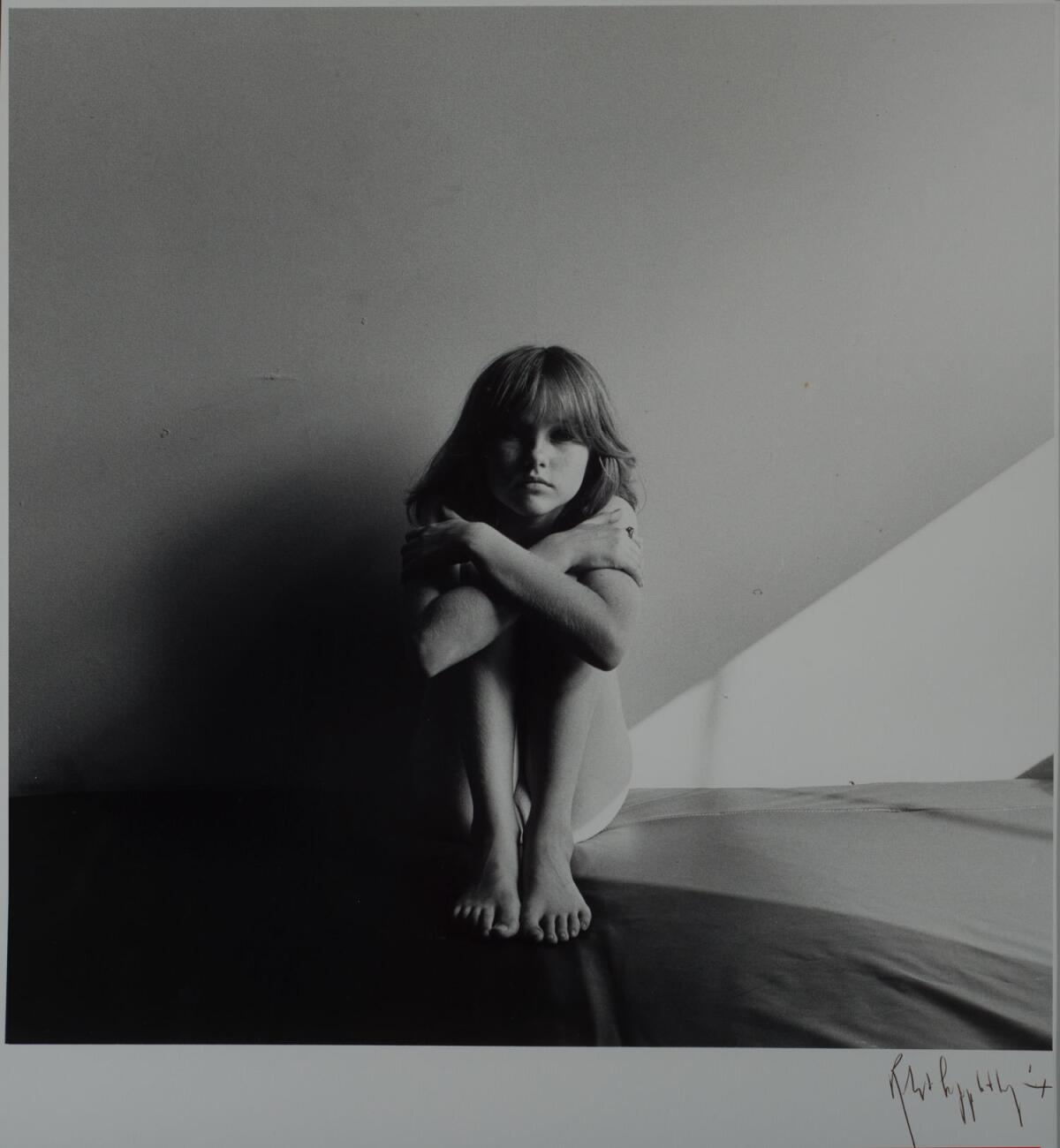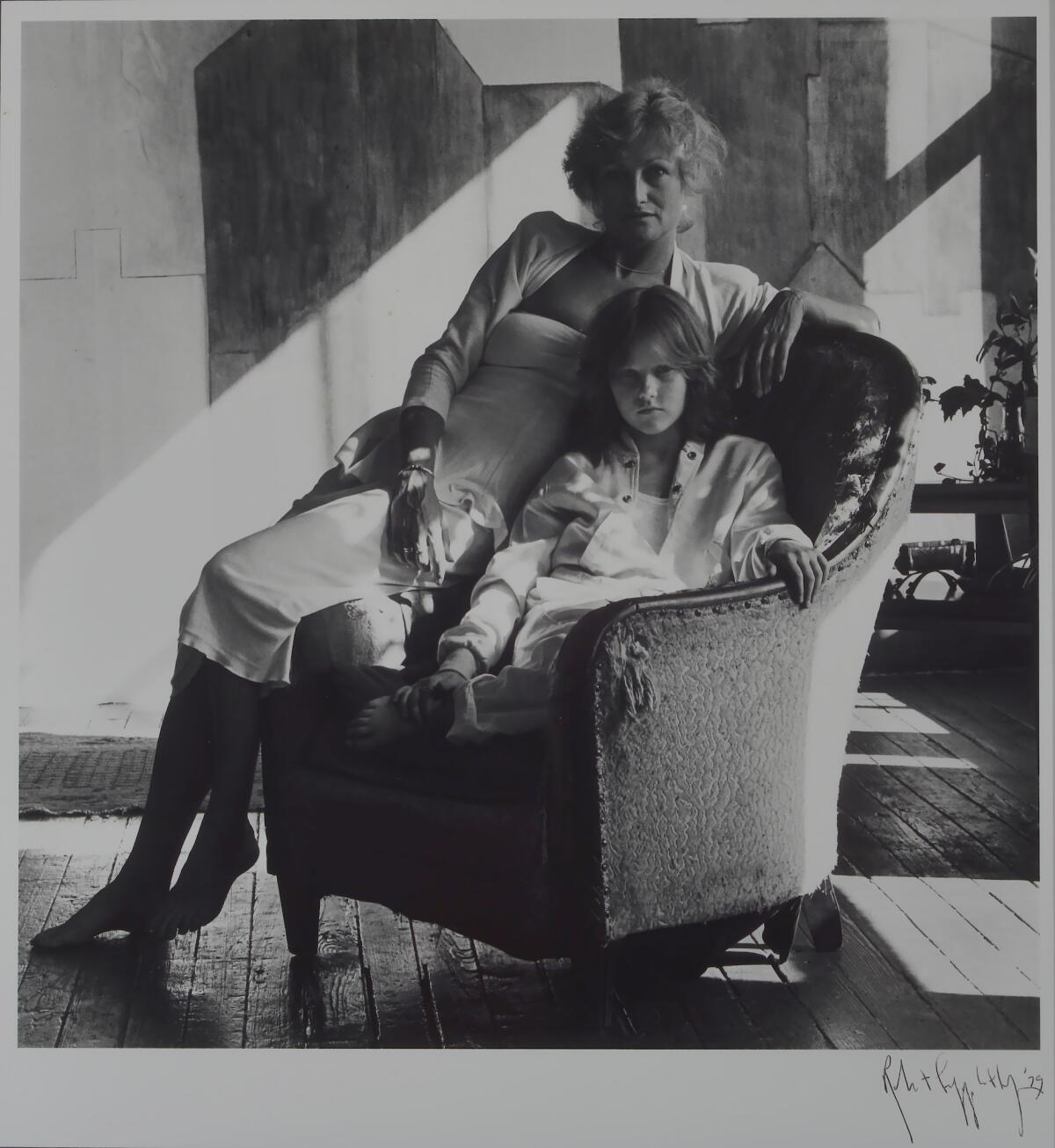The Robert Mapplethorpe photo you haven’t seen: The one he took of me
I first met Robert Mapplethorpe in the elevator of the Chelsea Hotel in 1973, when I was 4. My father had just died in a car accident, and my mother was simply lost. The New York hotel was a perfect place for anyone longing for a new identity or reality. Few people there were my age, and in my mind I ruled the shabby chic hallways like Eloise at the Plaza.
Robert, like most of my mother’s friends, was just another shadow smoking cigarettes, but I paid attention to him because he had a toy I wanted: a Polaroid camera.
Robert and I later became neighbors on opposite ends of Bond Street in summer 1976. He was 23 years older, so we were not best friends. We never sent postcards to each other when I went off to school, and I didn’t have his phone number listed as an emergency contact. But for almost 10 years, I saw him every day in a decade that changed us all.

Following my father's death, I had started a career as a Ford child model. My freckles, blond hair, big white teeth and cornflower blue eyes made me a winner in the Apple Pie category. I worked joyously for hours to avoid school and to live vicariously on the faultless advertising page, a juxtaposition with my life off camera. There were no sleepovers, no homework, no playing dress-up for me. My evenings were full of art openings, alternative theater and avant-garde performances. Experimental presentations from the Mud Club to the Kitchen (the old one on Broome Street) were stomping grounds for me and my artist mother, Eve. Robert liked to call her Eva.
Robert and his longtime lover and patron, Sam Wagstaff, were staples at the Orange Tree, a small Ukrainian restaurant on Houston Street, where Eva served breakfast all day. It was for artists who wanted real espresso, a beautiful waitress with wicked disregard for authority, an an old lady with a hump on her back cutting onions in the kitchen, and her drunk son playing the accordion. Then there was me: restless, waiting for the car service to bring me to my next photo shoot, looking forward to getting my hair curled and my undershirts pressed, to wearing snow-white tights and patent leather shoes, to smiling up at some fake tall Daddy for Avon perfume.
Taxis often refused to go up the old cobblestone streets in New York, and so I often was dropped at the corner of Lafayette and Bond: Robert's side. Robert would be on his fire escape, and I would pass and wave on my way home from work. He would toss me a comment about how I had been “done-up” and was too glamorous for the block. Even at my young age, I think we recognized in each other a longing for velvet slippers and designer furniture. Success and fame woven into our ability to walk alongside the homeless. This was our weekday pattern.
Robert was often there at night when I performed with Container, a punk band for which I was a vocalist. I was just 9, but he and Patti Smith were at CBGB when my partner, Jamie Dalglish, and our six-piece band performed in a show that included singing, film, dance and poetry. The audience obsessed over our mediocrity because Jamie and I were such a strange duet. The parts of myself that were stifled by modeling were liberated by sharing the stage where Blondie, the Ramones, the Police, Elvis Costello, the Fleshtones, the B-52s and Joan Jett performed.
See the most-read stories this hour >>
When I didn’t work, Eva and I went to Harlem theaters, off-off Broadway basement beat performances and the occasional date at the Rainbow Room. Tom Eyen once befriended my mother at La MaMa and gave us tickets to "The Dirtiest Show in Town," wondering if its satirical portrayal of urban decay, pollution, Vietnam War chaos and homosexuality could be understood by a kid. And it was. I got it.
Robert was my witness to my life: By day posing as one of Gloria Vanderbilt’s “girls” or for Bloomingdale's, by night trailing with my fearless mother in an adult club scene that valued my interaction. I was the androgynous, non-judgmental child.
One morning at the Orange Tree, Robert asked my mother to pose for a photo. What I have always adored about my mother was her lack of regard for fame, money or power. Thus she was naive to how Robert’s photographic art was evolving. To her, Robert was just part of the creative misfit family.
It was hot and humid in late July 1979 when Robert and his Hasselblad came up the block from his space at 24 Bond St. to our apartment at 54. Carefully carrying his camera in a worn messenger bag and his tripod in the other hand, he walked up four flights to our loft. It was past 3 o’clock: an early start for our block of artists. The shadows on the wall and the last beams of light on our faces signaled that the sun would soon be setting over the Hudson.
I walked around Robert in circles while he set up his equipment. He stroked the treasured camera, a gift from Sam.
“It's been to the moon,” he said.
His hands shook. I misunderstood him and thought that this actual camera had been on the moon, not that it was merely the type of camera had been used for the Apollo mission.
Robert stood behind the Hasselblad, his head tucked under a small black cape. He wore skinny worn jeans and black boots that made him look like a spider trying to crawl into the seam of a wall. My mother and I were dressed in white, standing in the fading light; he wasn’t happy. He kept coming out from under his tent and breathing quick sighs of frustration.
“It’s wrong,” he said, practically crying like an angry toddler. Watching the light with a stricken face, he glanced at the descending sun and back at us.
“Can you sit?”
My mother looked around the room and at the same time she and Robert grabbed an old chair we had carried home on trash day. Stitched up with velvet patches but still showing old horsehair stuffing, the chair got pulled across the room into the light. Then Robert dragged that old chair back and forth across 2 inches of light for what seemed like enough time for me to go to the moon.
He had us sit, then stand. He dragged the chair forward, then we sat down again, and he returned to hiding behind his cape. He would let out a soft sigh then push the chair in another direction. Not getting paid and becoming bored, I sat in the chair, tucking my feet beneath me. Eva draped herself across the back edge of the chair and kissed me on the head.
“Robert, sweetheart. I’m going a need a drink. We can try another time,” she sighed.
Robert looked back at us, holding up his left hand as if conducting a symphony. I knew the notes were about to crescendo. The black cap dropped to the floor and we stared into the lens, listening to the hard clap of the Hasselblad shutter.

Eva and Robert had a celebratory cigarette on the fire escape, and she causally showed him the rest of the loft. My room was a sprawling open space, and on the walls were butterflies and massive tulips Eva had drawn in oil crayon. A small birdcage floated above the piano, and three towering windows lighted up the room. Robert froze at the sight of the light and appeared to stroke it with his left hand.
“Eva, may I take a photo of your child?”
She looked at me for consent.
“As long as I do not have to smile,” I said.
Robert exited the room and went for his camera and tripod.
Having seen enough of Mapplethorpe’s work to know some of his models posed without clothing, when he went to fetch his camera, I stripped down. By the time he returned to my room, I was standing naked. For the man well known for his representations of sadomasochism and bondage, Robert had a surprising look of horror on his face. It was unforgettable.
“Oh, no, please stay in your underwear,” he pleaded.
I was humiliated and had embarrassed us both. I curled into a tight ball protecting my body. Still hugging myself, I followed Robert’s directions and moved gently toward the most complicated shadow in the room, halfway between the dark and light. The photo shows my underwear peeking through my shins, my feet displayed with the focus on veins, like they belong to a tired old woman. The detail and range of colors in the stark black and white portrait are brought to a haunting reality through a format Robert called platinum printing.
>>> REVIEW: Times critic Christopher Knight on the Mapplethorpe exhibitions at LACMA and the Getty
I have only chaste memories of being photographed by Robert and everyone he introduced me to. I can still see myself holding Marcus Leatherdale’s hand as we crossed Canal Street to his studio and then ate pizza afterwards on Delancey.
The last time I saw Robert I was 13. It was the end of summer 1983. Eva was packing the van to take me to boarding school near Philadelphia. Robert and Sam came to congratulate me on going to a preparatory school (even though I knew Sam was slightly disappointed because I had not been accepted his alma mater, the Hotchkiss School in Connecticut). Robert gave me one of his non-intimate and awkward pats on the shoulder, like a willow tree branch that gets tangled in your sweater. Wherever I was going, he said, it was a good way to “polish ourselves up.”
Mapplethorpe and his long, complicated history with the media are being remembered so much this year. There is an HBO film, the documentary “Mapplethorpe: Look at the Pictures.” The J. Paul Getty Museum and the Los Angeles County Museum of Art have collaborated on exhibitions that are an extravaganza of shared resources and power. But with all the new and never-seen sketches and collections they have unearthed, they are still missing mine.
Hruby is a writer living in Bend, Ore.
MORE FROM ARTS & CULTURE
Kahlil Joseph and family keep brother Noah Davis' legacy alive at L.A.'s Underground Museum
Eugene O'Neill's 'The Hairy Ape' is a rallying cry for the Bernie Sanders crowd
Follow The Times' arts team @culturemonster.
The biggest entertainment stories
Get our big stories about Hollywood, film, television, music, arts, culture and more right in your inbox as soon as they publish.
You may occasionally receive promotional content from the Los Angeles Times.







